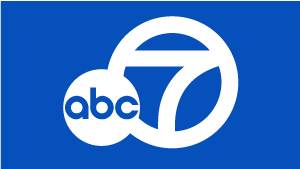Spare the Air Alert not in effect for San Francisco Bay Area
SAN FRANCISCO -- A Spare the Air Alert is currently not in effect in the San Francisco Bay Area.
People can find out when a Spare the Air alert is in effect by visiting the organization's website, calling (800) HELP-AIR, downloading the Spare the Air app on their smartphone or find Spare the Air on social media.
App users: For a better experience, click here to view the full map in a new window
What are Spare the Air days?
Air quality in the Bay Area can be unhealthy at times throughout the year.
Spare the Air Alerts are called when ozone pollution is forecast to reach unhealthy levels. Ozone, or smog, can cause throat irritation, congestion, chest pain, trigger asthma, inflame the lining of the lungs and worsen bronchitis and emphysema. Long-term exposure to ozone can reduce lung function. Ozone pollution is particularly harmful to young children, seniors and those with respiratory and heart conditions.
When a Spare the Air Alert is called, outdoor exercise should be done only in the early morning hours when ozone concentrations are lower. Residents are encouraged to reduce air pollution every day by rethinking their commute and avoiding driving alone.
Find out more about what the Air District is doing to address climate change in the nine-county Bay Area. Spare the Air-Cool the Climate is a blueprint for tackling regional air pollution and climate pollutants while improving the health of Bay Area residents for the next several decades. Check out the Bay Area Air Quality Management District's video about their vision on climate change:
On Spare the Air days or nights, there is no free transit.
Here's a list of simple things the public can do to make clean air choices every day:
- Bike to work or around town
- Take public transit
- Work at home or telecommute
- Carpool and link your errands to reduce driving
- Avoid using gas-powered lawn mowers and leaf blowers
- Reduce household energy use
- Don't use lighter fluid on the barbecue
- Avoid using aerosol spray cleaners, paints and hairspray
The Spare the Air smog season runs from May through October. The Winter Spare the Air season runs from November through February.
The Bay Area Air Quality Management District is the regional agency responsible for protecting air quality in the Bay Area. For more information about Spare the Air, visit www.sparetheair.org
RELATED STORIES & VIDEOS:
- Live: Track Bay Area air quality levels
- What's a Flex Alert?
- Tracker shows how close we are to overloading the power grid
- Heat stroke vs heat exhaustion: What's the difference and what are the symptoms?
- PG&E Power Outages: How to prepare for shut off
- What to do right now to prep for a planned power outage
- Here's how to store electricity before a power outage
- How to make your phone's battery last longer
- How to sign up for emergency alerts where you live
- Surviving a long-term power outage
- Consumers can file a claim with PG&E, but will they get paid?
- PG&E Outage: A look back at utility company's history of blackouts
- What everybody should know to help prevent hot car deaths
- Dry and secondary drowning: Hidden threats for swimmers
- Can you start a fire if you leave bottled water in your car?
- Can you bake cookies in a hot car?
- Facts and myths about sunscreen
- ABC7 Meteorologist Drew Tuma shares scary heat exhaustion experience
- Lotion in the refrigerator and more hacks to keep cool without AC
- How hot summer weather affects your car
- Natural remedies for sunburn
- Heat hypothesis: The link between summer weather and aggressive behavior
- Tips to stay safe during the hot summer months
- Why it's harder to cool off in humidity












